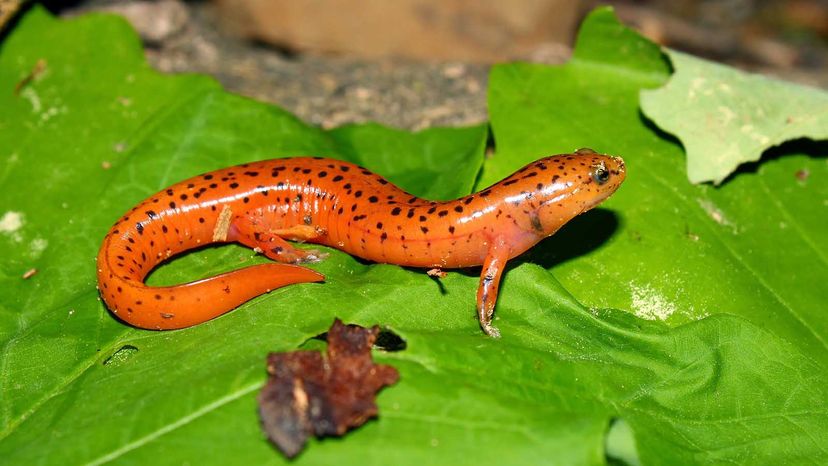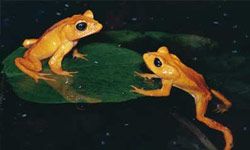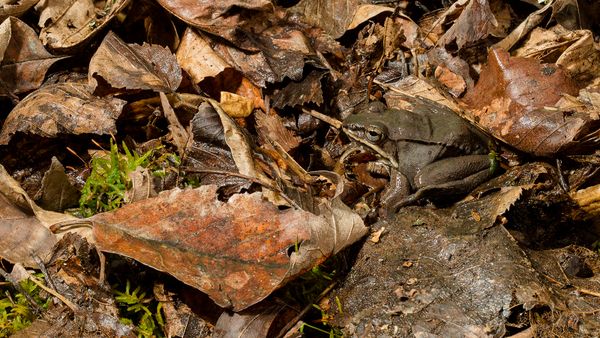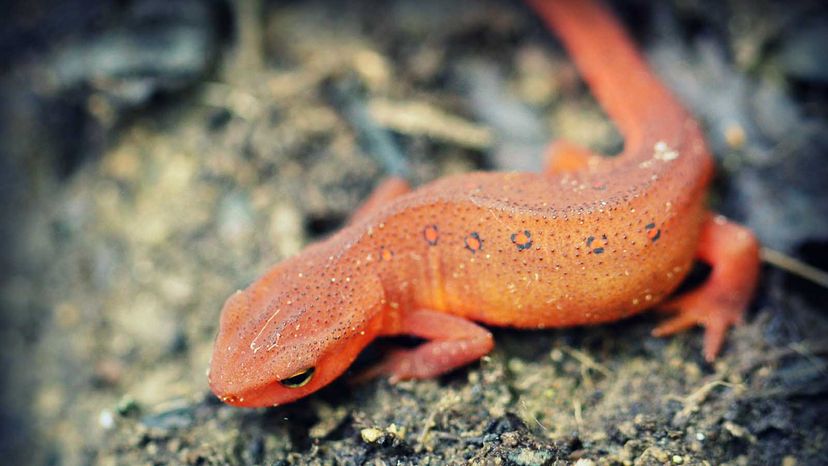
If you've ever gone hiking or backpacking east of the Mississippi River, you might've seen a little amphibian called Notophthalmus viridescens, or the eastern newt.
"Little" is the operative word here. About 3 to 5 inches (7.6 to 12.7 centimeters) long, the eastern newt could curl up on the palm of your hand.
Advertisement
Eastern newts start out as larvae. At birth, they hatch from their eggs in calm, fresh water. This is also where they'll spend most of their time as adults. But a strange thing happens during adolescence.
Between the ages of 3 and 4 weeks old, many of these newt larvae turn into "red efts." It's a temporary phase — marked by physical changes that influence behavior. Teenage humans, you know what we're talking about.
Red efts have rough, bright orange skin and webless fingers. Abandoning the cool ponds of their childhoods, they become landlubbers who hang out on forest floors or mossy meadows. With maturity, the skin moistens. The orange fades into a dull shade of green. And the tail gets more paddle-shaped, making it a perfect swimming tool. What was once a crawling eft has transitioned into an aquatic adult, a full-grown newt ready for reproduction.
Before they return to the water, young eastern newts are easily mistaken for a larger, unrelated species: the red salamander (Pseudotriton ruber). Found in many of the same states, it's yet another amphibian with spots, four legs and a long tail.
Oh and, déjà vu, it comes in an orange-red color. (Sometimes.)
So why do we call one animal a "newt" and the other a "salamander?" And what separates the former from the latter?
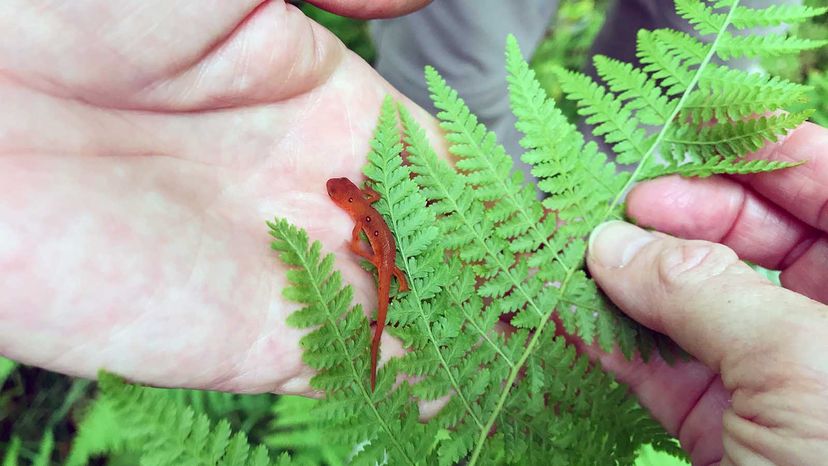
Advertisement
